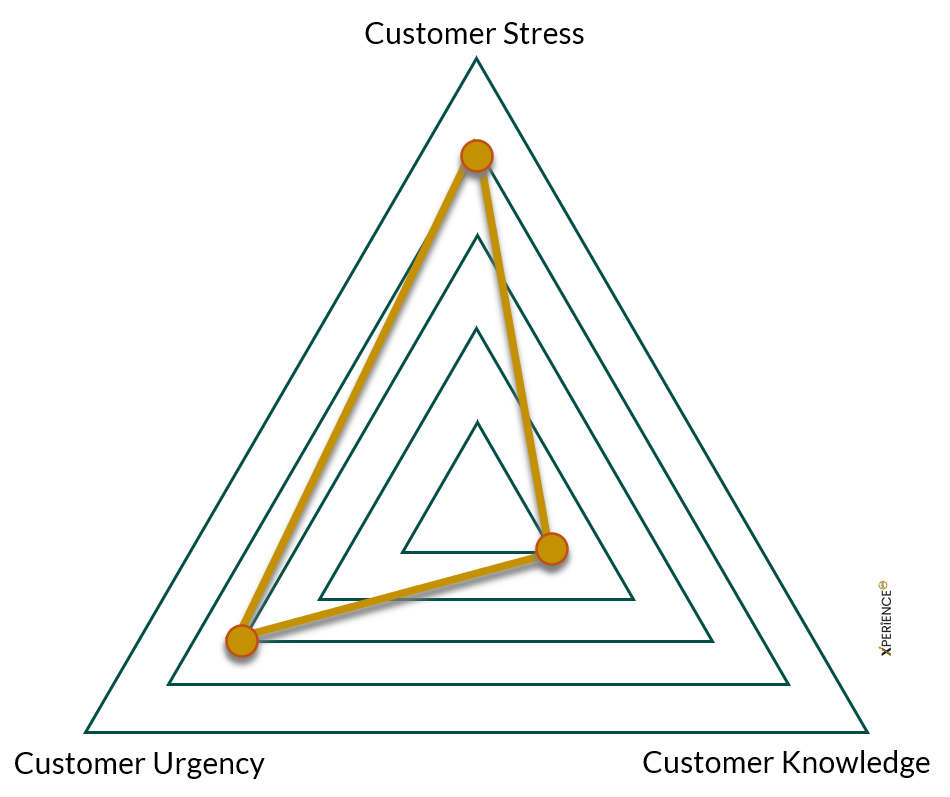We always talk about segmenting customers. It’s a very good idea to do that and to better understand what different actions and strategies to take for different types of customers with different types of needs, motivations, behaviours, outcomes, etc.
And what about the customer segmentation from a Customer Service perspective? What would that look like?
Years ago, back in my days managing call centre teams, we had an unofficial system for assessing the resources needed for each type of customer. It was a bit rudimentary, and I confess the idea was born in a pub over a few pints… However, when I think about it, it was actually a good way of segmenting customers and queries.
We used to have tiered sub-teams, so that’s the first segmentation: customers with a certain level of knowledge of the product, the tool or the platform would contact us with more complex questions that would require to be escalated to higher tiers so that the product specialists could help.
So the first filter would be the customer’s knowledge:
- Customers with low or medium knowledge would require the minimum package of resources from our team, with any front-line member able to fully resolve the query.
- Customers with advanced knowledge would still involve our front-line team for the initial reception, categorisation and escalation of the case, and the upper tiers of specialists to resolve the query.
The second dimension of the segmentation system involved was their urgency. Customers who felt that their cases needed to be resolved immediately were more likely to contact Customer Services more often, sometimes furiously, and possibly through different channels.
We always tried our best to close all cases as quickly as possible, or if not fully closed, then at least promptly acted upon or escalated. We used to have our processes to organise this. But with ‘urgent’ customers, it all got a bit more complicated because these cases were often given a higher priority than they normally wouldn’t have been. So our team would have to deal with an overload of high-priority cases, which could potentially lead to backlogs and performance issues.
So the second metric of the segmentation was urgency:
- Rushy customers would demand a high-priority resolution of their queries, jumping to the top of the queue, and leaving the truly high-priority cases in secondary positions, increasing performance risks across the team. This group would increase the amount of resources allocated, with certain levels of risks of having a significant impact on the whole team.
- Unhurried customers would represent the usual use of resources in this dimension.
If we put the two dimensions together, we can draw a graph to visually see how low knowledge and low urgency result in lower resource use, while high knowledge and high urgency imply more resources allocated.

On top of all of that, we can add a third dimension to the equation to make things even more precise. The mood of the customer would also have a significant impact on the team’s resources. Naturally stressed or tense customers tend to be more demanding, more negative and more unhappy, and this typically results in bizarre complaints with unusual reasons to handle. Again, this would represent an overload of work, potentially creating a backlog for the whole team to deal with.
The third metric would then be the stress level of the customer:
- The higher the stress level, the more resources will be needed to deal with a customer who is tense and will jump into arguments and raise complaints that need to be dealt with.
- More relaxed customers, on the other hand, will not require any more resources from our team than normal.
In order to add this third metric to the graph without using a complicated 3D model, we can use a radar chart with these three dimensions. To interpret the results, the larger the triangle, the higher the metrics, and the more even the triangle shape, the more balanced the three metrics.

Looking at customer service through the lens of customer knowledge, urgency and stress (or mood) gives us a fresh perspective on how we manage CS team resources. It’s not just about response time or expertise; customers have different personalities, different approaches and different emotions to bring to the table, and how that affects our interactions. High-urgency, high-knowledge, high-stress customers require much more resources than standard knowledge customers who are calm, informed and patient.
A much more rudimentary version of this system helped my team, back in the day, to avoid overwork, allocate resources more effectively and reduce friction.
This system doesn’t just categorise customers, it has the potential to challenge service teams to think beyond scripts and SLAs and adapt strategies to the real dynamics of each situation.
We could go further and turn this segmentation into a real model. We could thoroughly analyse all the completely different approaches and come up with efficient processes to better deal with these types of customers and all their combinations.
This approach to customer segmentation opens up new possibilities for refining service strategies. For those looking to develop structured processes that adapt to these different customer types, it’s a conversation worth having.

